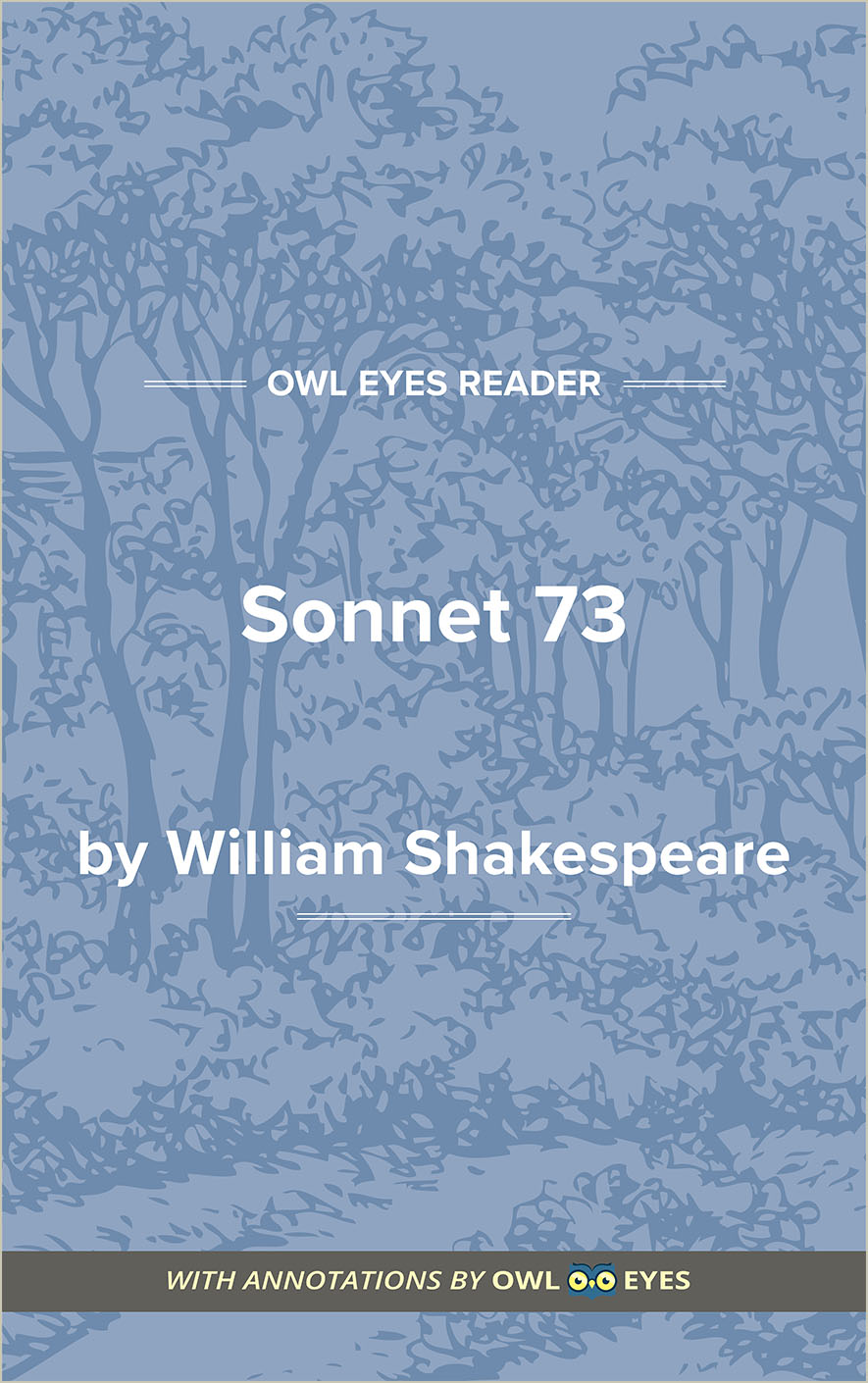- Annotated Full Text
- Literary Period: Renaissance
- Publication Date: 1609
- Flesch-Kincaid Level: 10
- Approx. Reading Time: 0 minutes
Sonnet 73
In Sonnet 73, the speaker ruminates on his own advancing age, imagining the youth’s perspective on his age. The sonnet takes on an elegant structure, with each quatrain expressing a fresh metaphor for the cycle of a human life. In the first quatrain, the speaker finds himself in the autumn of life, with few yellow leaves on the bare boughs. In the next section, the temporal metaphor tightens, expressing the speaker’s age as akin to the setting sun. In the final quatrain, the sun is exchanged for a fire burning down into ashes. In the closing couplet, the speaker claims that his fair youth loves him all the more because of his aging state. The language of the sentiment works on a broader level as well, allowing the specific characters of the speaker and the youth to fall away. The result is a meditation on the nature of love itself: we love most deeply that which we “must leave ere long.” The speaker sets aside the war he so often wages against the cruelty of time, taking instead a stance of acceptance. It is, after all, the passage of time that gives meaning to our human affections.
- Annotated Full Text
- Literary Period: Renaissance
- Publication Date: 1609
- Flesch-Kincaid Level: 10
- Approx. Reading Time: 0 minutes

